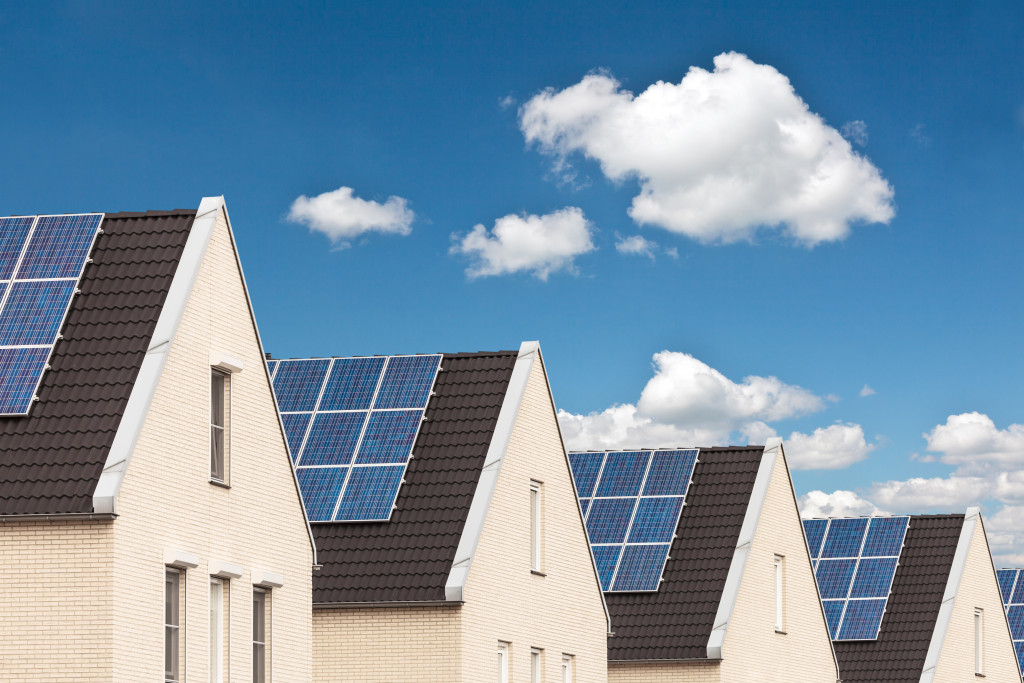Almost everyone is concerned about climate change — and one way to make actual changes is by reducing your home’s reliance on the electrical grid. More than 66 percent of US power production relies on fossil fuels. Alternative energy sources like wind and solar will make your home greener, and recent developments have made wind and solar more affordable.
Wind
Utah has no lack of wind. The state’s elevation ensures a steady flow of wind, almost double the ten mph required to run most wind turbines. An average house with 3-4 bedrooms typically requires a 4-5 kilowatt wind turbine — although houses in Utah can rely on smaller turbines because of the increased wind speeds. Roof-mounted turbines (1-2 kW) can produce around half the home’s energy requirements — costing around $5,000-$8,000. Large 5-kW turbines that can power 2-3 homes will cost $15,000-$25,000 — including costs for building permits, installation, electrical work, as well as transportation of the blades and other parts of the turbine. Of course, suburban or rural homes are better suited for wind energy.
Solar
Elevation plays a significant role in the efficacy of solar power systems. Sunlight, which powers solar panels, gets more concentrated with elevation. The thinner air and lower temperatures also keep solar power systems working at peak performance. Over the past years, developments in solar technology have made solar power systems more efficient and durable. Market forces and a more competitive field, have also made solar power more affordable. An 8-kW system should be enough to cover your home’s energy needs (assuming your electricity bills cost less than $150). Running throughout the day should also generate excess electricity sent to the grid — acting as a buffer for your nighttime use. Most homes will have enough space for the 25-35 panels required by an 8-kW system, and the higher concentration of sunlight will ensure optimal operations regardless of the sun’s position.
Reducing Energy Consumption
Green energy systems work best when a home is energy-efficient. Reducing your home’s energy consumption can help it reach a net-zero or net-negative electricity consumption from the grid. Almost 30-60 percent of the energy consumed in a home is used to regulate temperature — either heating in winter or cooling in summer. Insulation can reduce energy consumption by limiting heat transfer to and from the house, thereby requiring less heating or air conditioning. Proper insulation can reduce a home’s energy consumption by 30 percent or even more during the summer and winter months. Newer appliances and fixtures can also cut your home’s energy consumption. Appliances with energy star labels, especially ones that use inverter technology, can use 50 percent less electricity than older ones. Opting for brands that use the latest inverter technology is particularly important in choosing refrigerators, freezers, air conditioning units, and washers.

Utilizing Excess Production
While you can make sure your electric bills go to zero, you probably won’t get paid for any excess energy production. One of the best ways to utilize excess energy is by using an electric vehicle or EV. When it comes to greenhouse gas production in the US, transportation (28 percent) narrowly edge electrical production (27 percent) for the top spot at the emissions pie. Ensuring your vehicle doesn’t add to that statistic will make your home even greener — going net-zero on electricity and greenhouse gas production. Although an EV can cost a few extra dollars, you’ll be saving close to $3,000 a year on fuel. Charging an EV on a fossil-burning grid won’t make much difference to the environment— however, powering it using alternative energy is another matter.
Stay Connected or Go Off-Grid?
Remaining and going off the grid both have their advantages and disadvantages. Going off-grid will eliminate your electricity bills, but you’ll need additional batteries to store power and a generator or two in case of emergencies. Staying off the grid is more suitable for rural or secluded homes where electricity lines/cables would be too costly to run. Being electrically independent will also teach you to be as energy-efficient and make full use of the sun and wind. Of course, having the entire electrical grid as a backup to your alternative energy source is a good enough reason to stay connected to the grid.
Green energy sources like wind and solar are essential in fighting climate change. However, change is best when ordinary citizens and not the government drive it. Why wait for another 20-50 years for the government to go green — when you can do so today?











